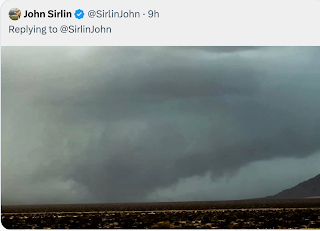The Yellowstone Volcano
I am not a volcanologist so I do not know how many of the specifics in this article are correct but I do know the Yellowstone volcano is showing signs of life and is worthy of study.
When you combine this concern with "no one alive has seen such a weak [solar] cycle" -- which, like the Yellowstone volcano, could cause global cooling -- it becomes apparent we are spending far too much on global warming (when the world hasn't warmed for a decade and a half) and far too little studying these other major threats.
Reader Zach Hargrove, meteorologist and holder of an associates' degree in geology writes,
That being said, I do have some issues with the article being discussed. It just has that classic feel of scaremongering and alarmist tone that certain websites publish simply to get more readers. There are definite reasons to worry about and monitor Yellowstone as it is thought to be the largest near surface magma chamber on the planet and we do have evidence of many violent super eruptions in the past. Scientists estimate the last three super eruptions occurred approximately 2.1 million, 1.3 million, and 640,000 years ago. These eruptions helped to crate the Snake River Plain. The last moderate explosion (which would probably be something close to what occurred on Mount St. Helens) is thought to have occurred 174,000 years ago while the most recent lava flows (but much smaller events) occurred approximately 70,000 and 13,800 years ago respectively. Obviously, we cannot gleam too much as far as patterns go with these figures as we simply just do not have enough data. 800,000 years spanned between the first and second super eruptions and 660,000 between the second and third. This is why many people seem to panic when we here about rising ground in Yellowstone as we are not far geologically from that 660,000 number at 640,000 years. However, given human time, 20,000 years is quite a bit of time obviously.
A lot has been made of the earthquake storms of this year, but I would argue that they are not very significant at this juncture. While there have been many earthquakes in each swarm, they have rarely (if ever) approached the 4.0 magnitude. If a system as immense as Yellowstone was anywhere near close to "going off," I believe we could expect earthquake storms to be much more intense. Before that much energy is released, we should have some major tectonic activity in the form of significant earthquakes well before any eruption. I would be more concerned with a possible big earthquake at Yellowstone than a significant eruption at this point. Much has also been made about separate swarms occurring simultaneously. Again, this is something that is being made into a larger deal than necessary. There are many minor faults that run throughout the region and caldera, so its not too hard to imagine two or more could be swarming at the same time even if it is not something that happens often. If we start seeing swarms of activity with multiple earthquakes over 5.0 then we may want to start taking serious notice, at least for a minor eruption or bigger quake. The article also makes this recent September swarm seem abnormal when in reality it is far from abnormal. 130 earthquakes were recorded in a 7 day period (all under 4.0), however in 2010 we saw a 7 day period produce over 500 quakes. Before the September swarm, there was also an active period in Feb of 2012 where 1620 quakes were recorded in a month. After the February swarm, the quakes moved back to normal background levels until September. At this stage, we are also seeing earthquakes at normal background levels in the caldera. The fact is that these earthquake swarms are just not very abnormal, even at what seems like high concentrations to the average person. We actually have not see a single earthquake over 4.0 in Yellowstone since 2011 which is more significant, in my opinion. On top of that from the period of 2000-2013, we have only seen two earthquakes approach a 5.0 magnitude and none 6.0 or above. Even in 1959, we saw a 7.5 magnitude earthquake that did not cause any volcanic activity.
The article also talks about the 3 inches per year growth, which geologically is probably not very significant and the growth has subsided and has currently fallen back to normal background levels. Articles talking about apocalyptic disasters are popular and folks tend to be fascinated with them, but in my amateur opinion (and I think most real geologists would agree with me), the risk for a super eruption any time soon is very slim. It will go off again, but the scarier threats would be locally - strong earthquakes and smaller scale lava flows. However, even here we see no evidence of anything significant in the near future. I do think we would see enough extreme uplift/increase in acidic gas seepage/stronger earthquake activity to prepare us for something major. How much time that would be is hard to say, obviously. I would be more concerned with Mount Ranier and Seattle. That is a mountain that could be overdue for an explosive eruption and if it does erupt, all of the glaciers (6 or 7, I can't remember) would flash melt and inundate Seattle. Seattle would most likely cease to exist. But again, there is no evidence for anything like that any time soon, either.





Comments
Post a Comment